Why and How Russian-Occupied Crimea Can Fall to Ukraine
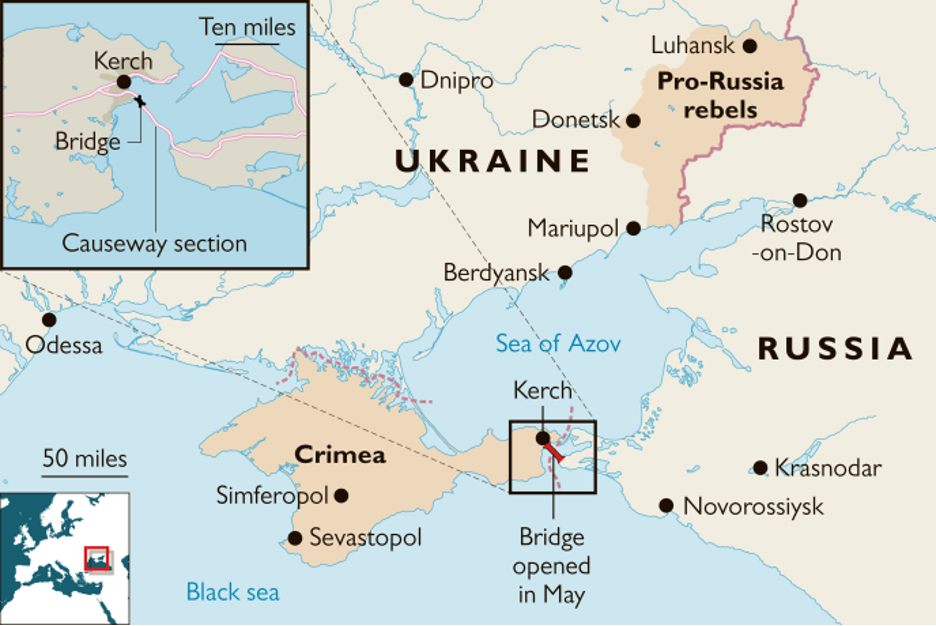
Why and How Russian-Occupied Crimea Can Fall to Ukraine
Crimea is likely far more vulnerable than many assume. Given Russia’s sloppy, absurdly ineffective approach to this entire war, Crimea may actually be ripe for the taking. Why this is the case, and how Ukrainian forces can undo Putin’s entire Crimean project of the last eight years and deal his regime a catastrophic blow, is detailed below.
April 26, 2022 (this article has been adapted from the original version published on Brian’s news website Real Context News on April 24 and titled How Ukraine Can Take Back Crimea from Putin’s Reeling Russian Military)

Weeks ago, we saw Russia’s fronts around Kyiv, Chernihiv, and Sumy collapse into full routs, and Ukrainian forces have been successfully counterattacking outside of Kharkiv, preventing any major Russian advances towards Mykolaiv, and should be able to move to retake nearby Kherson in the not-too-distant future. We also saw (and I predicted beforehand, apparently just about the only person to do so) Ukraine destroy Russia’s most prized and powerful warship, the Slava class cruiser Moskva, since it did not withdraw from being in anti-ship missile range.
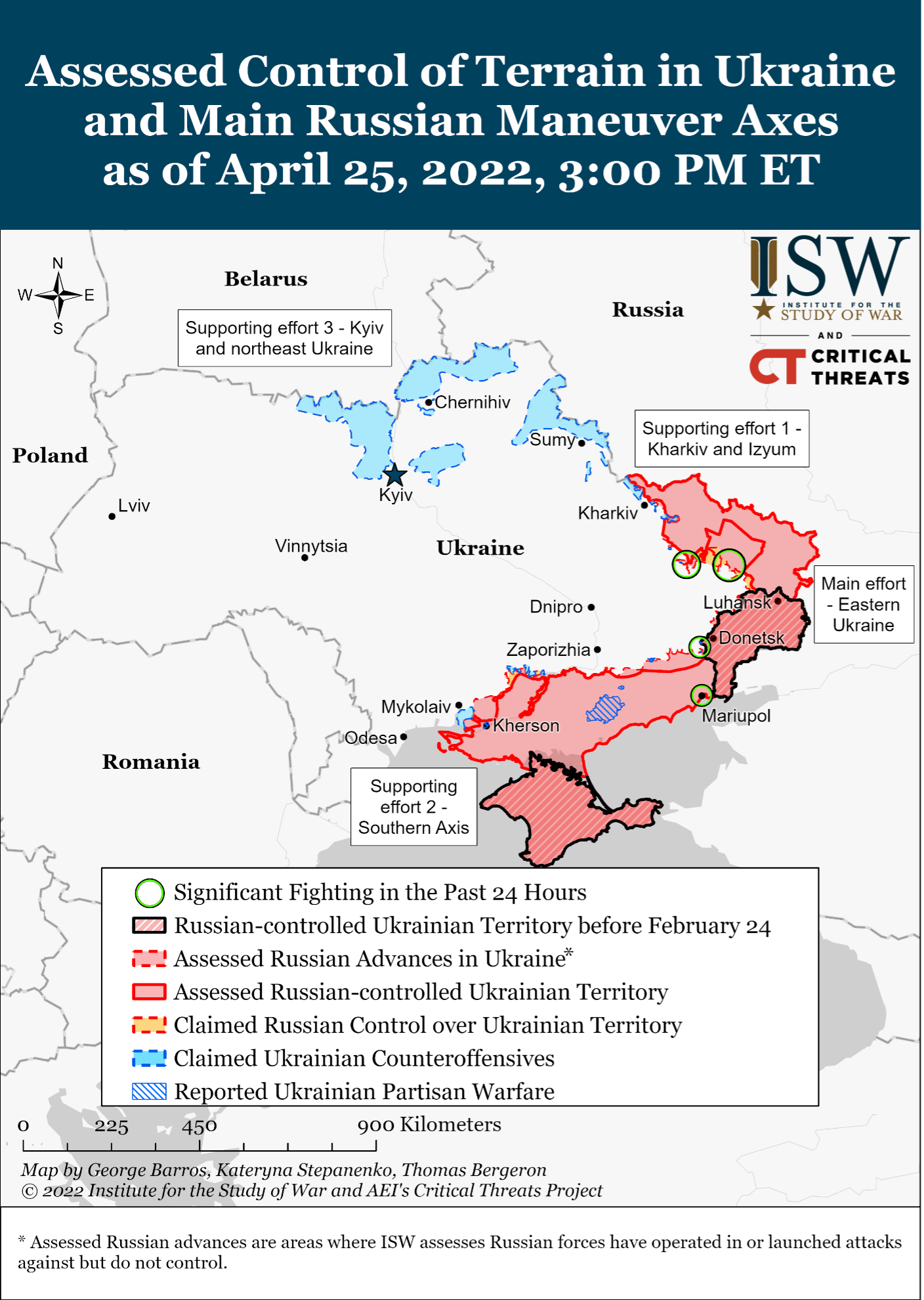
Russia is already spread thinly and has sustained horrific casualties—not even two weeks into Putin’s massive escalation, perhaps (even likely, as I argued) more Russians killed than all U.S. military deaths in eight years in Iraq two decades in Afghanistan combined, now more than the official (admittedly underestimate) Soviet toll from a decade in Afghanistan form 1979-1989, and, as of April 26, maybe (likely) over 22,000 Russian troops and mercenaries killed with thousands of vehicles and hundreds of aircraft destroyed; the U.S. Department of Defense estimates that, as of April 20, Russia has lost one-quarter of its combat power (combined troops, weapons, & equipment), an assessment echoed April 25 by the UK defense secretary. Simply put, Russia’s military is not in prime condition.
As such, it is not likely there are large formations of troops south of Kherson not already being used on the frontlines that are ready to defend the rest of the territory Russia has gained in between Crimea and Kherson or even Crimea itself, so if the Russians are defeated on the Kherson front, there will likely be very little in between advancing Ukrainian forces and Crimea itself, and not a large number of defenders in Crimea, since Russia invaded from there and was expecting to be conquerors, not defenders. If Russia has to move troops to try to stop any Ukrainian advance if Ukraine destroys or breaks through Russian formations around Kherson, those will likely have to come from other fronts where those troops are needed and Russians are desperate, but generally failing, to advance, and, as the Russians aren’t particularly well-fueled or well-led, such a rapid adjustment of their troops’ positions cannot be counted on to be competently executed or even happen at all.
In other words, it shouldn’t be terribly difficult for Ukraine to take Crimea once it starts experiencing success on the Kherson front, which it already is: even as I am writing this, Ukraine announced that it destroyed the Russian command post for the Kherson region, with some fifty military officers inside at the time, claiming to have killed two generals and badly wounded another. If true, this would be a devastating blow to the command-and-control dimension of Russian operations in the region and we may be witnessing a momentum shift on this front as I write this.
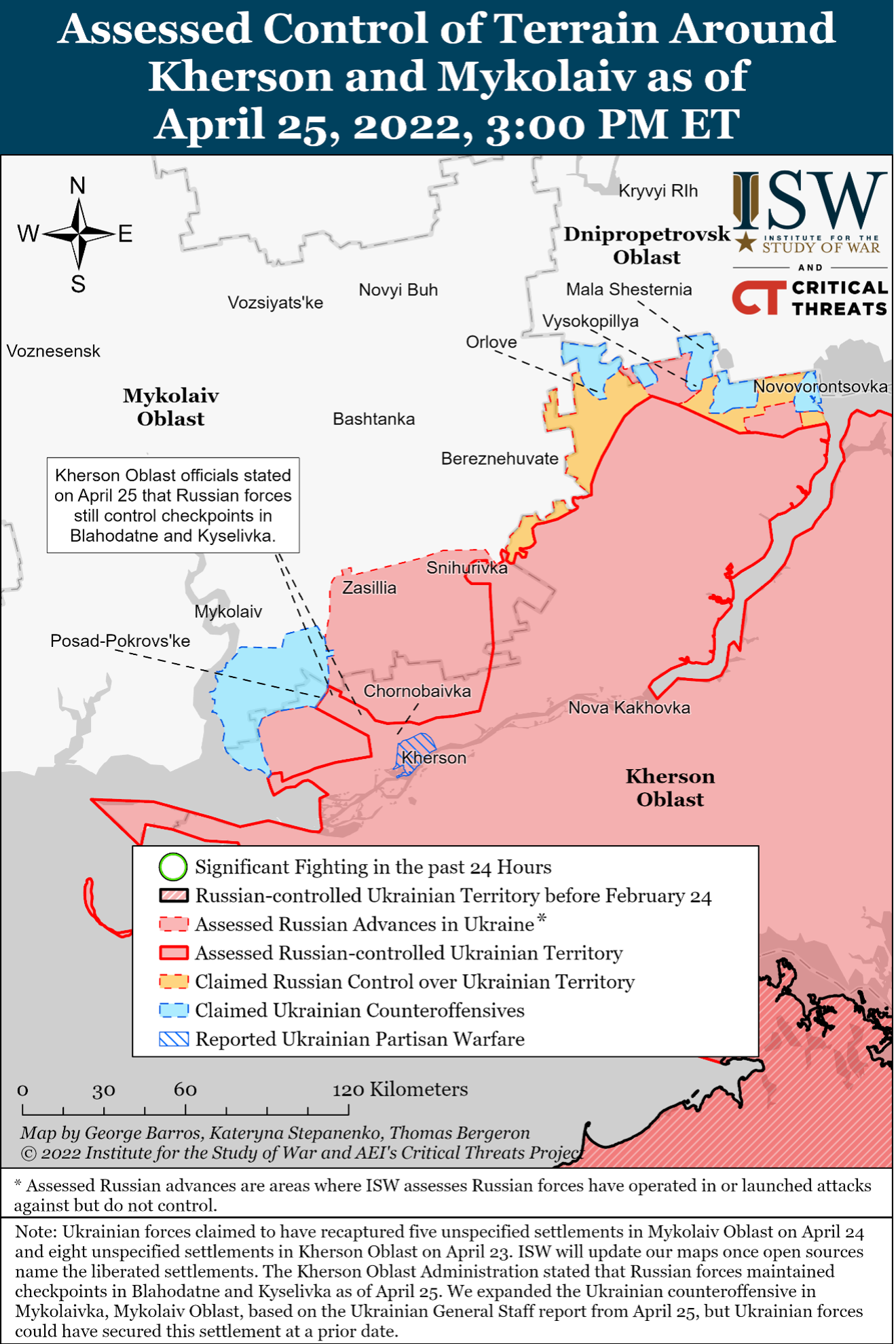
Why Ukraine Can Do This
Looking beyond Kherson, here are the main reasons why Ukraine can take Crimea and end the Russian occupation that has been in place since 2014.
Russian Hubris
We have already seen Russian defenses of Russian and Belarusian territory on the border of Ukraine are weak: multiple successful (apparently Ukrainian) raids have been carried out in Russia close to the Ukrainian border against targets that include a fuel depot and a key rail bridge, while a Belarusian resistance of sorts has helped cripple Russian logistics in Belarus, the country led by the laughable Alexander Lukashenko, Putin’s stooge and the last real dictator in Europe.
This was because Putin did not anticipate any serious resistance from Ukrainians (let alone Belarusians). As such, there has for much of the war been no strong presence inside the Russian border near Ukraine as Putin has committed nearly all troops initially allocated for this war to the fighting already. As some of the main axes of advance for Russia, the fronts that moved north from Crimea have also met stiff resistance and taken high casualties, and it is unlikely, with the same type of hubris in effect throughout Russian areas of operations, that much caution was taken in keeping healthy reserves of high-quality forces in Crimea. And even if Russian combat performance improves significantly (and for reasons that are deeply institutional and cultural this is unlikely), it would be improving from such a low level that performance would still leave oh-so-much to be desired.
Crimea Is Isolated
The Crimean Peninsula is isolated and not easily reinforceable or resupplied. Reinforcements and supplies can only come by land from one bridge over the Kerch Strait—the Crimean Bridge, or Kerch Strait Bridge—as everything to the north is Ukraine and Crimea is surrounded by sea on its other three sides. In part to combat this isolation, Russia constructed the Crimean Bridge through the Kerch Strait to join Russia and Crimea by land (this isolation is also one of the reasons the Kremlin wants to carve a land corridor from Russia to Crimea through Ukraine).
Work began on the bridge in early 2016 and it was completed in mid-2018, Putin personally opening it with much fanfare (the railway part was completed at the end of 2019) as the longest bridge built in Russian history and the longest in Europe (12 miles). But its construction was illegal as well as rushed, its quality and ability to stay intact in its harsh environment questioned by experts. It is still quite a source of Russian pride, a symbolic and substantive achievement that brings military and economic benefits to Russia. All this only makes a ripe target even more ripe, one that will probably be easier to destroy because of the rush-job.
Destroying the Crimean Bridge, then, in multiple locations across its span so that it would take a long time to become serviceable again should be a primary and immediate goal of Ukraine, one that should not be too difficult to accomplish, be it with missiles, maybe low-flying drones coming in over the waters to the south of the bridge, or perhaps even a special operations team. Indeed, the secretary of Ukraine’s National Security and Defense Council, Oleksiy Danilov, recently noted while I was writing this very piece that the bridge would very much be a target (much to anger of the Kremlin).
True that, for now, Russia controls some of Ukraine north of Crimea and sort of has a land corridor to Donetsk (one of the two regions of the Donbas in Ukraine’s east that Russia has partially controlled since 2014) and Russia, but I doubt that will be the situation for long, given Russia’s track record of abysmal combat performance and that, as far as supplying or reinforcing Crimea by sea, Russia needs to soon withdraw or keep withdrawn Russian surface warships out of range of Ukraine’s anti-ship missiles or soon see them destroyed…
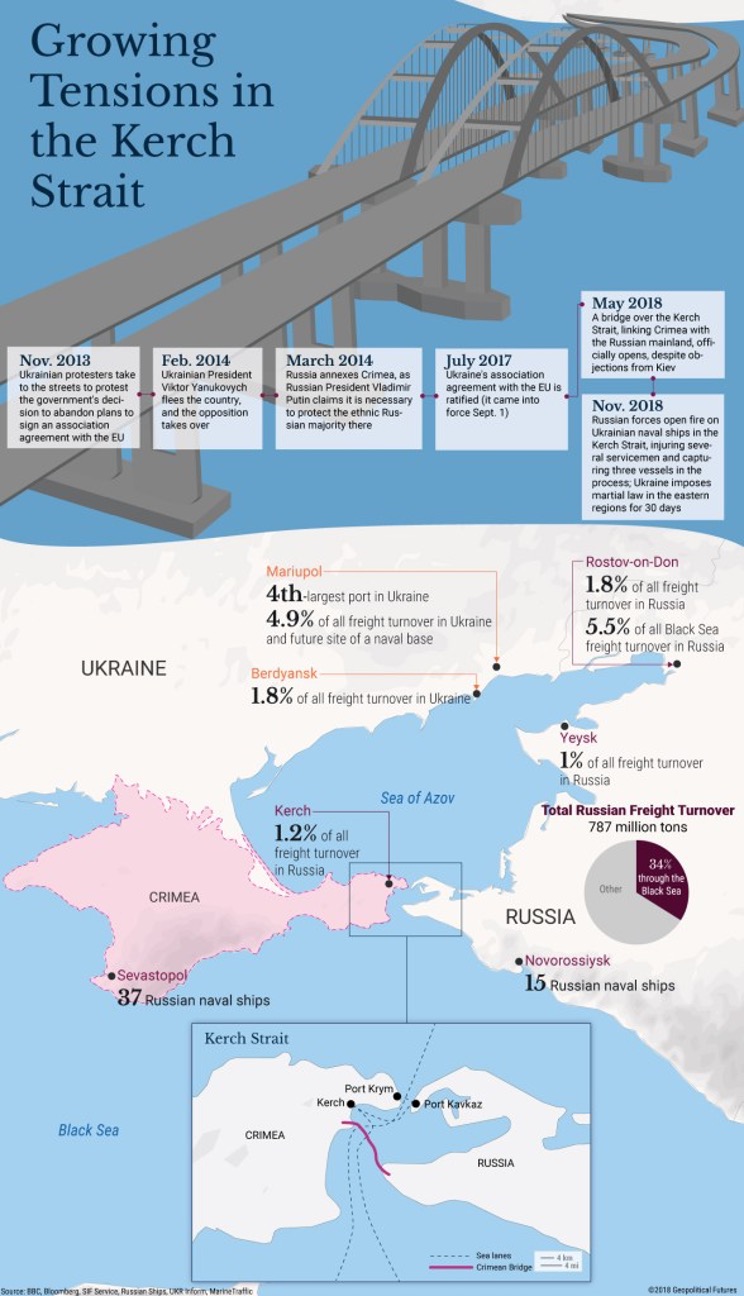
Russia’s Navy Has Been Exposed As Weak and Vulnerable
But, as I noted in my last piece predicting that Ukraine would take out the pride of the Russian Navy—the Black Sea Fleet flagship, the Slava class cruiser Moskva, Russia’s most powerful surface ship—counting on the Russian Navy for supplies, and most other forms of meaningful support, is something that cannot happen for much longer, and may even already be a thing of the past. The selective use of Ukraine’s own Neptune cruise missiles—two of them connecting on April 13 to destroy the Moskva—suggests, as I noted was a distinct possibility in my aforementioned piece, that the Russian invasion has disrupted the general deployment of Ukraine’s Neptune anti-ship missile program, scheduled for this very month. But whether more Neptune missiles or the anti-ship missiles promised by the West, plenty more anti-ship missiles are coming if they are not already there. The days of the Russian Navy operating freely by the coast of Ukraine, including Crimea, are about to be over and, already, Russia has apparently moved whichever of its nineteen remaining large surface ships in the region were still operating off the Ukrainian coast much farther away from the coast in the wake of the Moskva’s sinking.
Russia cannot reinforce its combined fleet with any of the ships it has in the Mediterranean—some brought from fleets stationed far away in the run-up to the war—because Turkey has closed its Bosporus and Dardanelles Straits to incoming military vessels in a sign of solidarity with Ukraine (this has left more than a few key Russian ships unable to join their Black Sea-deployed brethren as planned). Only ships from the Caspian Sea Flotilla can reinforce, which has to be done through the Volga-Don canal (and wow, if Ukrainians could engage in a covert mission in Russia to damage the canal and put it out of commission, that would be amazing and would also do significant economic damage to Russia by halting shipping traffic between the Caspian and Azov/Black Sea regions). And, even if it does bring in ships from the Caspian Sea, like Russia’s other surface ships, they will just be prime targets for Ukrainian anti-ship missiles—on track to join the Moskva on the seafloor—if they don’t stay far away from Ukraine’s coast, all but negating their presence.
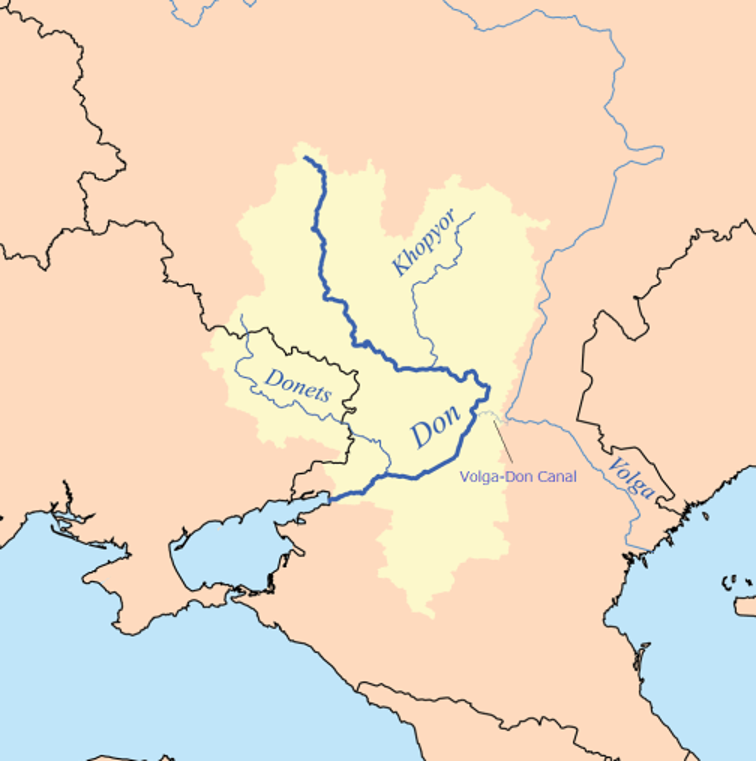
Ukrainian Military’s Clear Advantages Over Russian Military
Versus their Russian foes, the Armed Forces of Ukraine are in a much better overall position and of a much higher quality even though Russia has more and heavier weapons platforms such as tanks, artillery, planes, helicopters, and naval ships (I have explained away that last one already).
Ukraine actually has more troops. Far more. There is no shortage of Ukrainians willing to fight for Ukraine; at some points, there have been more volunteers than Ukraine has been able to accommodate, and large numbers of Ukrainians living abroad have been returning home to fight. So Russia is trying to carry out an offensive against what is actually a numerically superior force. Not a good strategy at all.
Ukraine’s individual troops are by far better equipped and supplied. They often have weapons that can easily knock out any Russian vehicles (and even, sometimes, Russian aircraft), more body armor, more night-vision goggles. No wonder the Russians are constantly getting beat when they engage in firefights.
Ukrainian forces have far higher morale. I have discussed how insanely poorly led, ill-equipped, ill-supplied, ill-trained, and ill-informed Russian soldiers in this war generally are. They are losing or stagnating everywhere they are fighting. And many of them have died, many more seeing their comrades die. Instead of “leaving no man behind,” the Russians frequently abandon their dead and wounded, so disorderly are many of their retreats. In contrast, it seems Ukraine has suffered far fewer losses, but while the Russians have died for just about nothing, Ukrainians are sacrificing for a very successful effort thus far. Their morale is high and they are passionately willing to freely defend their homes and families and fellow Ukrainians, which cannot be said to be the same for the Russians.
Ukrainians are fighting on home turf. Often, units in a particular area are from that area. They often know the terrain intimately, whereas the Russians do not. The advantages that play out on the battlefield from this are numerous, resulting in better intelligence and fewer losses for Ukrainians, more losses for Russians, more efficient operations for Ukrainians, slower operations for Russians.
Ukraine’s logistics and far better and far simpler. Unlike Russia, which has terrible logistics and needs to resupply or reinforce from Russia or the parts of Ukraine it occupied before February 24, Ukrainians are fighting often where they can easily bring in fresh supplies, new equipment and weapons coming in from the West, and their own reinforcements and new recruits. As Gen. Mark Hertling, U.S. Army (ret.), explains so well, since Ukrainians are often supplying themselves with interior lines, their supplies and troops need to traverse far smaller distances than Russian supplies and troops. In part as a result of that, those Russian supplies and troops are exposed to Ukrainian units that know their own home turf, resulting in those Russian supplies and convoys often being destroyed or ambushed before they can reach their final destination. And the next point greatly enhances this point…
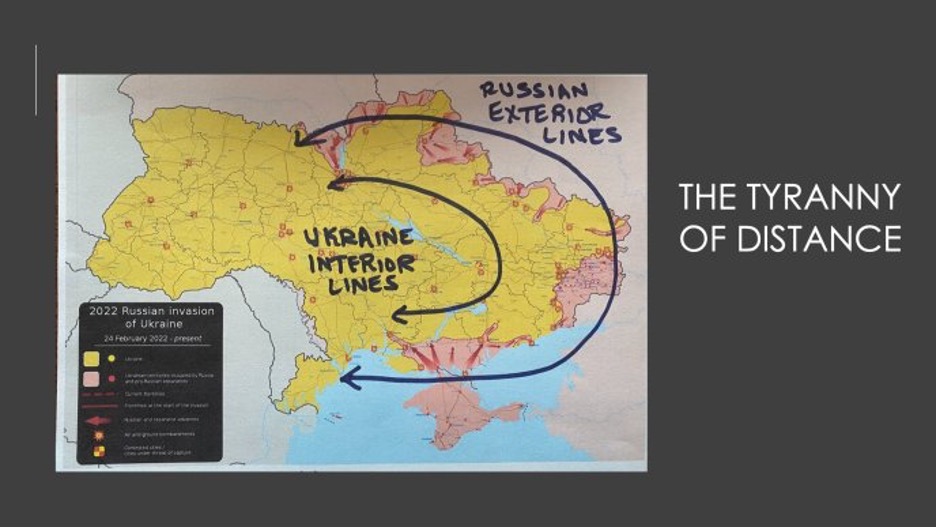
Ukraine has a lot of help coming in, increasing help, from the rest of the world (Russia does not). Recently, this has included MiG aircraft parts that are significantly increasing the number of planes Ukraine can get into the sky. But it is also increasingly including heavy weapons like tanks (better than what the Russians have) and artillery (also better than what the Russians have), so much so that U.S. defense officials at the Pentagon now estimate Ukrainians actually have more operable tanks in Ukraine than the Russians, and these newest heavy weapons are already having an impact.
How to Take Crimea: The (Coming?) Siege of Crimea
So given all this, how should Ukraine proceed?
Well, first and foremost, they should find a way to take out the pride of recent Russian infrastructure achievements, the Crimean Bridge. This would make it far more difficult to supply Crimea and Russian forces that have invaded further into Ukraine from Crimea; with the anti-ship missile threat looming for the Russia Navy, that leaves the treacherous land corridor from the Donetsk, subject to Ukrainian partisan attacks and Ukrainian military raids, counterattacks, and air, drone, and missile strikes. The destruction of the bridge will also further weaken Russia’s low morale, not just its pathetic logistical efforts.
Then, it could be possible for Ukraine, now getting reinforced by heavy weapons and troops that were victorious to the north, to launch an attack to break through the Kherson front and advance to the Crimean border, cutting it off from other Russian forces. Yet, as Russia seems keen on an offensive in the area, it would be wise to first allow Russian forces to smash themselves into pieces as they have with their offensives elsewhere. Unlike, say, the situation in Mariupol, where a small number of Ukrainian defenders have held on heroically despite the odds and inflicted outsized casualties on Russian forces, the Russians will find far more, better-rested, better-equipped, and better-supplied Ukrainian troops near Kherson. If the Russians are stupid enough to attack and repeat their failures near Kyiv and elsewhere in the north, the Ukrainians can play defense and inflict heavy casualties before launching their own counterattack.
But if Russia is slow to attack or is bluffing around Kherson to focus more on the Donetsk and Luhansk regions of the Donbas, Ukraine may be able to catch Russia off-guard and still launch an offensive from around Kherson that could cut off Crimea from Russian positions to its north and roll back many of the gains Russia has made in south-central Ukraine. Such a move might prompt Russia to weaken its support for the Donbas offensives to meet the Ukrainian offensive.
Whether it waits for the Russians to mash its battalion tactical groups (BTGs) against better equipped Ukrainian troops or takes the initiative and launches an assault first, Ukraine will be able to seriously threaten Crimea sooner rather than later if it can knock out that Crimean Bridge and destroy or drive off the Russian Navy with anti-ship missiles; indeed, both of these are well-within Ukraine’s capabilities.
With most forces that were in Crimea taking part in the invasion to Crimea’s north, again, we can expect a not terribly strong troop presence in Crimea. Adding support to the idea that Crimea is not the best-supplied area at the moment is that the Russians are looting grain from granaries in Kherson and elsewhere and moving the plundered grain into Crimea, along with vegetables.
Thus, it would be relatively easy to put Crimea under a form of siege. With its one bridge to Russia destroyed and Russian naval vessels either sunk from anti-ship missile or fleeing out of their range and into irrelevance, land and sea routes to resupply and reinforce Crimea will be cut off, and, as noted, it is unlikely large numbers of quality troops will have been left behind in Crimea. Air drops would be possible but aircraft will also be at risk from stinger missiles and Ukrainian air defense systems Ukraine could move to the border of Crimea, including air defense systems recently sent by NATO’s Slovakia. Russia has its own advanced air-defense systems in Crimea, so airstrikes would be difficult and risky for Ukraine. Thus, a siege to soften up the Russians before a ground assault would make the most sense, as the Russian troops will begin feeling it over the course of the siege, which would further weaken morale and combat effectiveness before that assault would come. If Ukraine can neutralize Russian air defenses during the course of the campaign, it could then utilize aircraft with far less risk to help finish the job.
The Siege of Crimea would weaken whatever resistance the Russian troops there—unable to be reinforced or resupplied by land or sea and not able to get much from the air if anything—would be able to offer, and when Ukraine does attack, it can use its more advanced, more precise, and heavier weapons it is now getting or about to get from the West.
It is true that most Crimeans are ethnic Russians who supported Russia’s illegal annexation, with those disagreeing having been mostly silenced, suppressed, “disappeared,” arrested (even for displaying the flag of Ukraine), tortured, or even killed, especially journalists, activists, and Crimean Tatars (who have a long history of persecution and oppression at the hands of Russia). But contrary to the expectations of many of those supporting Russia in Crimea, prosperity did not come to Russian-occupied Crimea; rather, stagnation, isolation, and sanctions did, along with a collapse of the tourism industry and an overall deterioration in the quality of life. The population would have declined were Russia not moving in large numbers of military, security, and intelligence personnel and their families from Russia to Crimea. Morale among those living in Crimea would likely have been much higher right after the 2014 takeover than it is now. Ukraine will almost certainly be far more careful than Russians in avoiding civilian casualties, as Russia engages in indiscriminate bombings (or, more accurately, deliberate) of civilian areas. The people there, already suffering under a depressed economy for years, will likely see a further drop in morale during a siege. Many will try to leave, and, unlike the Russians with civilians elsewhere in Ukraine, Ukrainians are near-certain to allow them to do so. For the above reasons, even though pro-Russia sentiment remains high, it is doubtful that many Crimean civilians will want to fight Ukrainians in the way Ukrainians rose up to resist Russians. If Ukraine were to invade, Russian troops weakened by the siege and suffering from low morale and the ubiquitous poor Russian leadership, knowing no reinforcements are coming and having nowhere to retreat to, would likely be defeated relatively quickly.
Losing Crimea Would be Russia’s Most Devastating Loss of the War
The loss of Crimea would be a devastating blow to not only morale for the Russian military, it would be quite substantive: one of its main bases in the region, including the main base of Russia’s Black Sea Fleet at Sevastopol, would be in Ukrainian hands. Perhaps even more importantly, it would—as I have previously argued—shatter Russians’ confidence in their incompetent Putin: the retaking of Crimea was a great source of pride and their faith and confidence in him, and, regardless of what nonsense, mindless propaganda is thrown at them by Russian state television, losing Crimea would make it painfully obvious that Russia is losing the war and losing it badly, even more than the high casualties, even more than the sinking of the Moskva. It might not even occur to Russians that Ukraine could retake Crimea, but with the approaches I have laid out here, it is a distinct possibility, one that would devastate Russia’s war effort and wake up many Russians with a shock to the simple fact that Russia is failing in its insane war against the people and government of Ukraine, against democracy, and against reality itself.
Such losses have sparked revolt and revolution before in Russian history, as I have discussed before, and the heavy casualties on the Russian aide that would result from Ukraine retaking Crimea along with the losses of the military bases there, including the headquarters of the Black Sea Fleet—indeed, perhaps the loss of much of that fleet itself that this campaign might entail—could be a loss from which Putin is unable to recover personally, from which Russia can only recover without that man ruling from the Kremlin as if Russia is his own his petty fiefdom and he is a petty warlord.
Also see Brian’s deeply related eBook, A Song of Gas and Politics: How Ukraine Is at the Center of Trump-Russia, or, Ukrainegate: A “New” Phase in the Trump-Russia Saga Made from Recycled Materials, available for Amazon Kindle and Barnes & Noble Nook (preview here).






